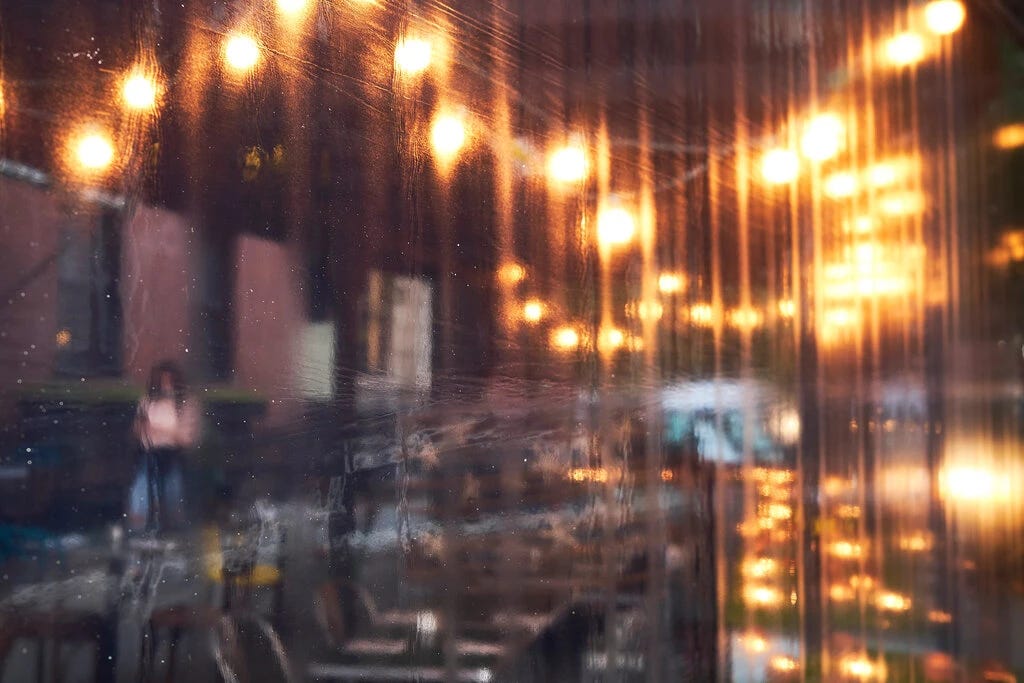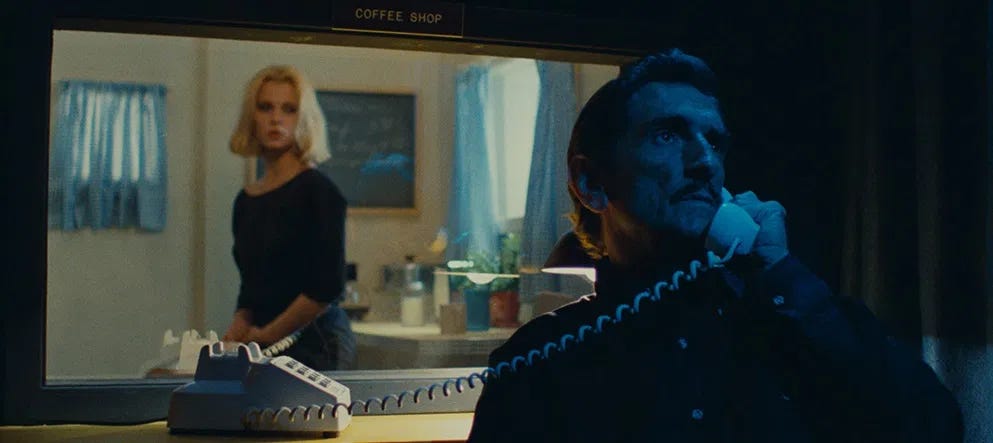Hi, how are you?
I've been mostly a pile of mush these last few weeks. Relatedly, I've discovered (maybe a little too late at this stage in the pandemic) that if I walk outside first thing in the morning, a world of possibility opens up in a way that feels chemically unachievable within the confines of my 750 square-foot apartment. In a bout of stir-crazy desperation last week, I began walking to a coffee shop two blocks further than usual for the sole purpose of introducing some element of difference into the day. It's a small thing, but seeing the morning light slant in a new direction brought a minor revelation that this route had always existed, that the light looks this way most mornings if you can find it, and that even after stewing in a haze of stasis for weeks, change is possible.
I am now half-vaccinated, which is both a fortunate and weird existence to navigate. For me, it has meant finally feeling comfortable with seeing a friend or two in one of those outdoor dining structures — the ones that look like garden sheds with clear shower curtains put up as dividers. In the fall when these dining bubbles first popped up, there was general apprehension about their safety (Is this outdoors? Is this indoors? Did we just build a miniature version of the very environment we're being told to avoid??). Now, as waves of vaccines roll out by the millions daily, these structures have become the most visible sites of this uneasy phase of reintegrating back into society.

I sat inside a bubble at a restaurant in Nolita last week, and it felt surreal to be surrounded by other groups of diners sitting so thrillingly close, even if the normal thrum of chatter and clinking silverware was absent thanks to the transparent seal keeping us safe from each other's particles. It was a strange dynamic: each table, a little silent movie, free to observe, pulling you in like the yellow windows of apartments you can see from the street on a moonstruck night —something about these illuminated containers of living are hard to look away from.
Being there reminded me of a scene in Wim Wenders’ 1984 film Paris, Texas, where the main character, Travis, revisits his ex-lover, Jane, in a peepshow club where she works. In the scene, Jane sits behind a sheet of sound-proof glass in a replica of a 1950s kitchen —a reminder of the life they once dreamed of sharing together— while Travis talks to her through a phone line with his back turned. The scene is a portrait of two people yearning: for each other, for the past, for something more unplaceable.
Socializing in these dining bubbles — simulacrums of an old reality we desperately miss — is just one of the countless reminders that the world as we knew it is gone. I think fondly of all the strange and wonderful distractions from the early Tiger-King-Sourdough-Zoom-dance-party phase of quarantine— but none have distracted from the immutability and sorrow of this year. For Jezebel, Molly Osberg writes about the dislodged tone of a culture trying to offer people ways self-help our way out of the pandemic:
“In the place of a shared sense of reality or collective expression of mourning, I see a torrent of advice on how a person who managed to survive can feel more self-actualized once they return to the shuffle between the office and after-work drinks. To me, this looks like denial, the first tentative step towards what I’m told are seven distinct stages of grief.”
Outside, the flowers are blooming and the days are getting longer, and each day I oscillate between clear-headed optimism and an ocean of grief. “We go up to heaven and down to hell a dozen times a day,” wrote May Sarton in her 1972 journal collection, “Journal of a Solitude.” I came across her book last spring, just as the lockdowns were beginning and that line has stuck with me. The incalculable tolls of this year are still making themselves known to us, delayed processing we couldn't quite get to through the Zoom rooms replaced by clear plastic dividers — even as the world begins to look a bit brighter.
A few hours after I got my vaccine, I was knocked back by the intensity of its side effects. (I did not, as Calen put it, “handle it like a champ.”) I fell into a shallow sleep of feverish dreams, in which some kind of monster had sawed off my arm. The pain woke me up and I couldn't get back to sleep. I thought about all the people in their homes who were feeling the side effects of this modern medicine coursing through their bodies and felt a slight comfort in knowing that this experience was shared by so many at this particular moment.
The reverberating effects of this virus have shown two truths: that our pain is both shared and rarely the same. It's that tension that powers a terrible sense of isolation and also collective meaning. We do what we can to cope. I call my grandma in her nursing home to make it feel like we're together. I take a new morning walk. Some days, these small things bring a remarkable sense of freedom. Others, they feel totally fruitless. And some days, all there is to do is wait for some language to arrange the chaos of this year. And wait and wait for ideas to push up like spring flowers once again. And wait and wait and wait for the words to build bridges across incomprehension.
— 🌙 Some Bookmarks
*The Incalculable - Popula
*A Virtual Memorial for Those We’ve Lost - NYT
*The Singularity - new poetry series from Atmos Mag on the relationship between the environment and the human experience that's all kinds of lovely
*The Rise of Therapy Speak - New Yorker
& a parting visual bookend on the subject of bubbles








"And some days, all there is to do is wait for some language to arrange the chaos of this year".
It seems you've found and arranged some of these powerful words already :)
This is the most poignant representation of this past year -- of the intense counterpoints of our lies, this past year. Thank you.